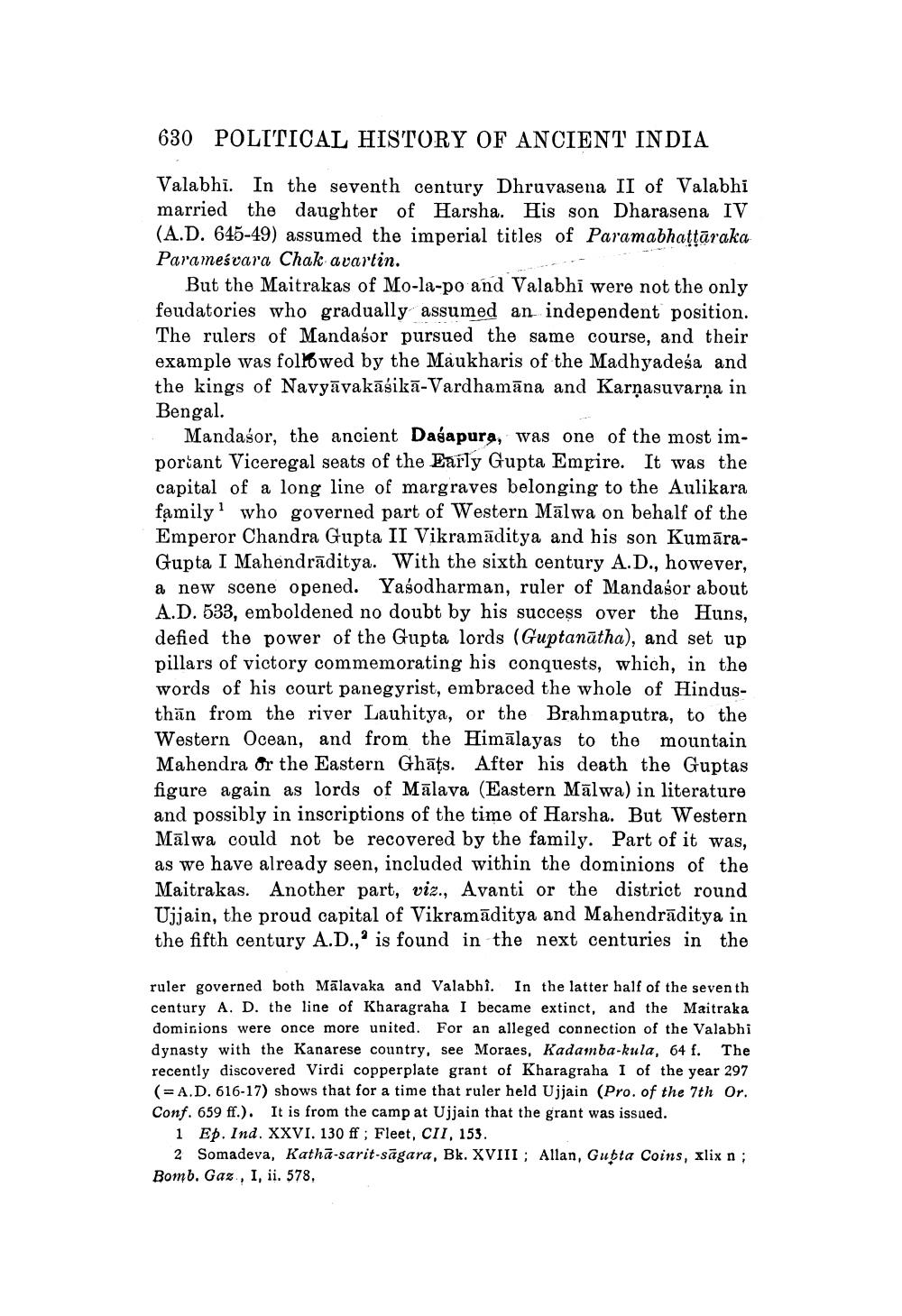________________
630 POLITICAL HISTORY OF ANCIENT INDIA
Valabhi. In the seventh century Dhruvasena II of Valabhi married the daughter of Harsha. His son Dharasena IV (A.D. 645-49) assumed the imperial titles of Paramabhattāraka Parameśvara Chak avartin.
But the Maitrakas of Mo-la-po and Valabhi were not the only feudatories who gradually assumed an independent position. The rulers of Mandaśor pursued the same course, and their example was followed by the Maukharis of the Madhyadeśa and the kings of Navyāvakāśikā-Vardhamāna and Karnasuvarna in Bengal.
Mandasor, the ancient Dagapura, was one of the most important Viceregal seats of the Early Gupta Empire. It was the capital of a long line of margraves belonging to the Aulikara family' who governed part of Western Mālwa on behalf of the Emperor Chandra Gupta II Vikramāditya and his son KumāraGupta I Mahendrāditya. With the sixth century A.D., however, a new scene opened. Yasodharman, ruler of Mandasor about A.D. 533, emboldened no doubt by his success over the Huns, defied the power of the Gupta lords (Guptanātha), and set up pillars of victory commemorating his conquests, which, in the words of his court panegyrist, embraced the whole of Hindusthän from the river Lauhitya, or the Brahmaputra, to the Western Ocean, and from the Himālayas to the mountain Mahendra or the Eastern Ghāts. After his death the Guptas figure again as lords of Mālava (Eastern Mālwa) in literature and possibly in inscriptions of the time of Harsha. But Western Mālwa could not be recovered by the family. Part of it was, as we have already seen, included within the dominions of the Maitrakas. Another part, viz., Avanti or the district round Ujjain, the proud capital of Vikramāditya and Mahendrāditya in the fifth century A.D.,' is found in the next centuries in the
ruler governed both Mālavaka and Valabhi. In the latter half of the seventh century A. D. the line of Kharagraha I became extinct, and the Maitraka dominions were once more united. For an alleged connection of the Valabhi dynasty with the Kanarese country, see Moraes, Kadamba-kula, 64 f. The recently discovered Virdi copperplate grant of Kharagraha I of the year 297 (= A.D. 616-17) shows that for a time that ruler held Ujjain (Pro. of the 7th Or. Conf. 659 ff.). It is from the camp at Ujjain that the grant was issued.
1 Ep. Ind. XXVI. 130 ff; Fleet, CII, 153.
2 Somadeva, Kathā-sarit-sāgara, Bk. XVIII; Allan, Gupta Coins, xlix n; Bomb. Gaz, I, ii. 578.




